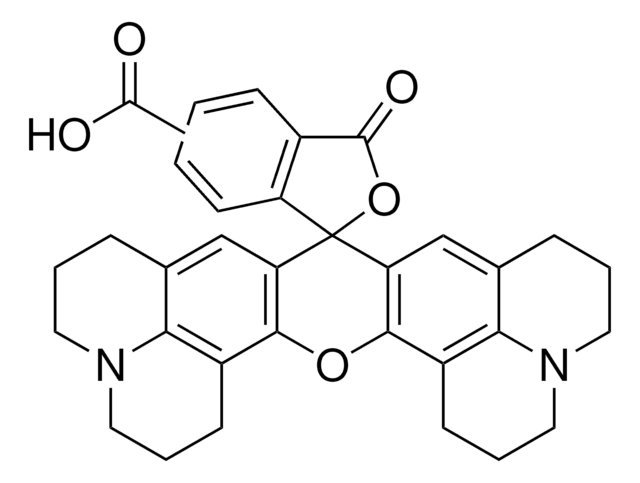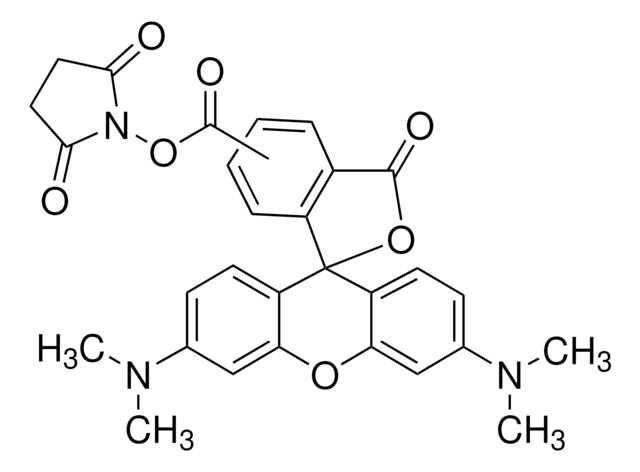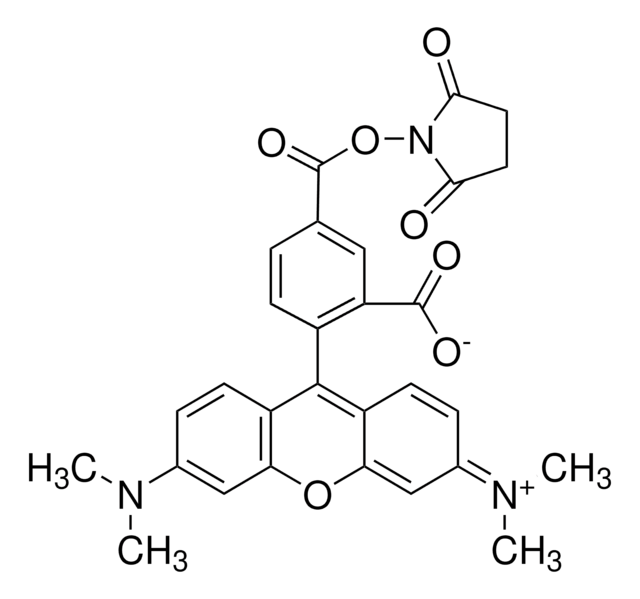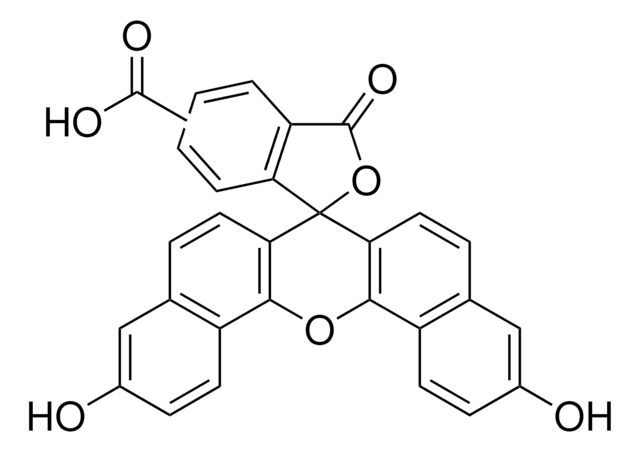41969
5-Carboxy-X-rhodamine N-succinimidyl ester
BioReagent, suitable for fluorescence
About This Item
Prodotti consigliati
Nome Commerciale
BioReagent
Forma fisica
powder
Solubilità
DMF: soluble
acetonitrile: soluble
Fluorescenza
λex 575 nm; λem 600 nm in 0.1 M phosphate pH 7.0
Compatibilità
suitable for fluorescence
Temperatura di conservazione
−20°C
Stringa SMILE
[O-]C(=O)c1cc(ccc1-c2c3cc4CCCN5CCCc(c45)c3[o+]c6c7CCCN8CCCc(cc26)c78)C(=O)ON9C(=O)CCC9=O
InChI
1S/C37H33N3O7/c41-29-11-12-30(42)40(29)47-37(45)22-9-10-23(26(19-22)36(43)44)31-27-17-20-5-1-13-38-15-3-7-24(32(20)38)34(27)46-35-25-8-4-16-39-14-2-6-21(33(25)39)18-28(31)35/h9-10,17-19H,1-8,11-16H2
BTTBJYLMDASSAS-UHFFFAOYSA-N
Applicazioni
Altre note
Avvertenze
Warning
Indicazioni di pericolo
Consigli di prudenza
Classi di pericolo
Eye Irrit. 2 - Skin Irrit. 2 - STOT SE 3
Organi bersaglio
Respiratory system
Codice della classe di stoccaggio
11 - Combustible Solids
Classe di pericolosità dell'acqua (WGK)
WGK 3
Punto d’infiammabilità (°F)
Not applicable
Punto d’infiammabilità (°C)
Not applicable
Dispositivi di protezione individuale
dust mask type N95 (US), Eyeshields, Gloves
Certificati d'analisi (COA)
Cerca il Certificati d'analisi (COA) digitando il numero di lotto/batch corrispondente. I numeri di lotto o di batch sono stampati sull'etichetta dei prodotti dopo la parola ‘Lotto’ o ‘Batch’.
Possiedi già questo prodotto?
I documenti relativi ai prodotti acquistati recentemente sono disponibili nell’Archivio dei documenti.
Articoli
Fluorescent Labeling of Peptides
Il team dei nostri ricercatori vanta grande esperienza in tutte le aree della ricerca quali Life Science, scienza dei materiali, sintesi chimica, cromatografia, discipline analitiche, ecc..
Contatta l'Assistenza Tecnica.








